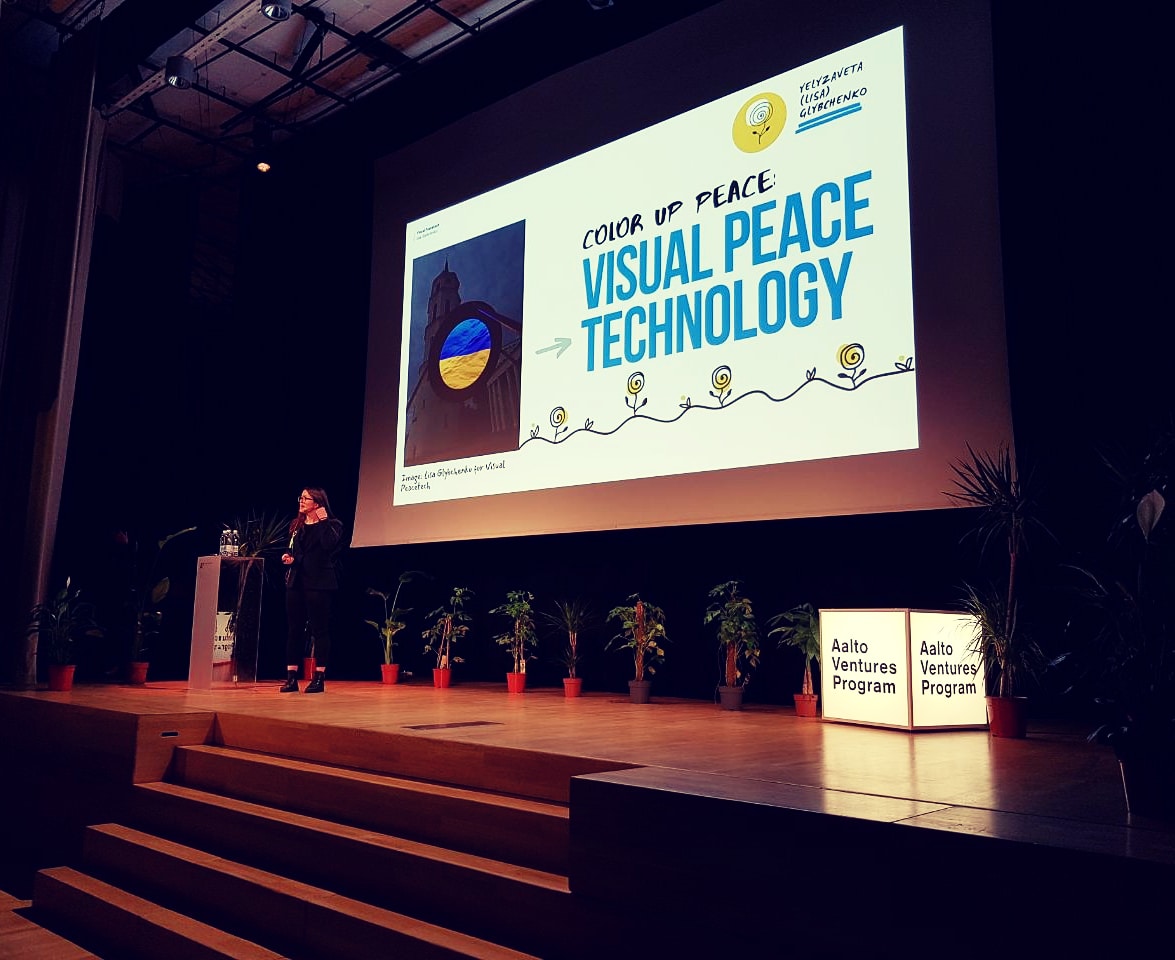
Visual Peacetech
Exploring digital visual images as security-building tools to support multi-track holistic peace processes.
What Visual Peacetech Is All About
Lisa Glybchenko’s PhD Research “Visual Peacetech: Digital Visual Images as Security-Building Tools” at Tampere University, Finland, explores digital visuality of security/peace, VR as a tool of digital diplomacy and peacebuilding, AR technologies as tools for implementing peaceful futures, Internet governance and ex-/in-clusion within digital peace design. A strong emphasis of this research is on supporting Ukraine, Lisa’s home country, and building peace in non-colonial ways there – peace as Ukrainians see it. As such, the project is a strong force for de-colonization and de-weaponization of the very fields of peace/security-building and peace/security-research/studies (weaponization of these fields means that colonial and badly designed peace practices become instruments of war and otherwise foster war). Being the first-ever thorough academic investigation of peace technologies, the project theorizes “visual peacetech” and develops original artistic-technological tools, which practitioner peacebuilders can start using already now.

About
“What could happen if developments in digital technology, visual art-making processes and security practices were by design directed at achieving sustaining peace? Could we, then, rightfully speak of ‘peace technology’ – or even ‘visual peace technology’ – as enhancing experiences of security for people in conflict-affected communities? What would the role of digital visual images be in such peace work?
These questions, in their first and most basic form, appeared in my head as, partly due to the pandemic, I found myself increasingly immersed in digital technologies in general and, as my interests go, digital visual art-making. The questions eventually turned into a research plan, which is now the basis of my Ph.D. project summarized here…”
Yelyzaveta (Lisa) Glybchenko
The Visual Peacetech project explores the conceptual and practical potential of performing context-specific digital, virtual and augmented design-technology innovations to support multitrack peace processes and futures design. This research project is the first systematic study of design/images in/as peacetech, and it develops the notion of ‘visual peacetech’. Both the academic outcomes and the technological-artistic applications of the project will serve to enhance our understanding of digital visuality of security/peace, VR as a tool of digital diplomacy and peacebuilding, AR technologies as tools for implementing peaceful futures, Internet governance and ex-/in-clusion within digital peace design. The methodologically inclined studies within the project will also be insightful for peace practitioners, policymakers and entrepreneurs looking to include off-digital technologies into their practices in the fields of peacework, politics, democracy-building, digital diplomacy, art for change, strategic digital communications, and nuanced social work.
